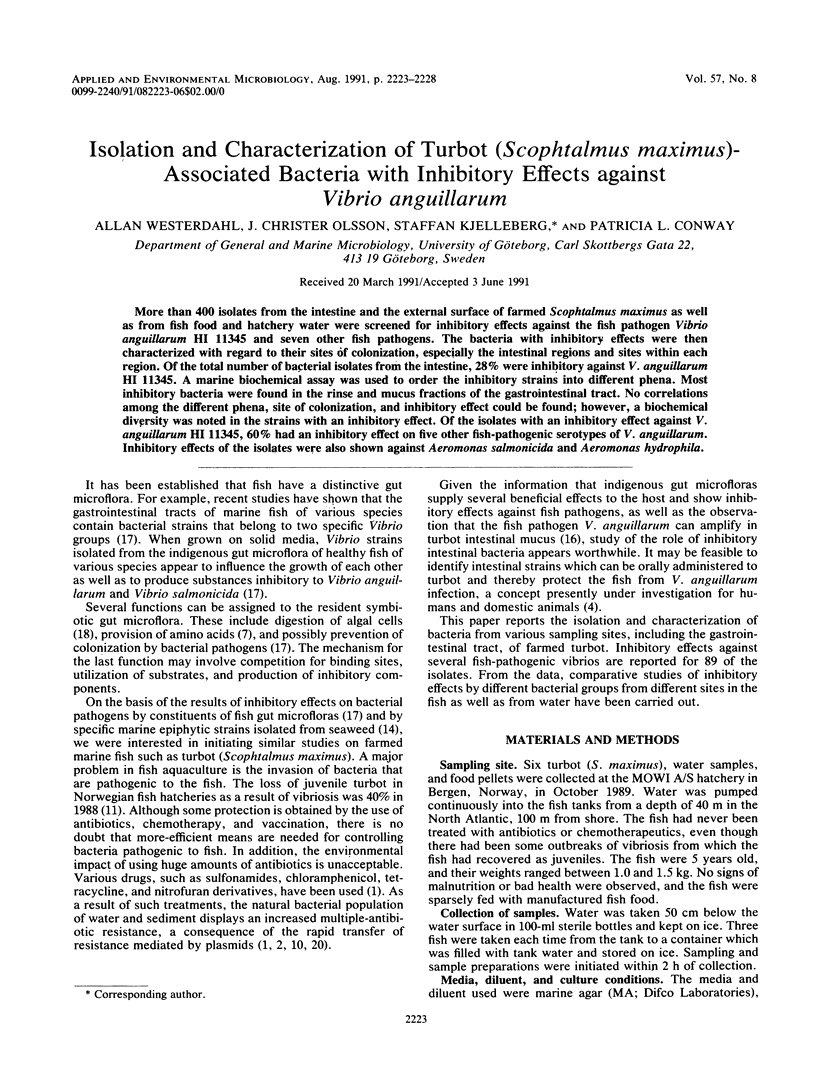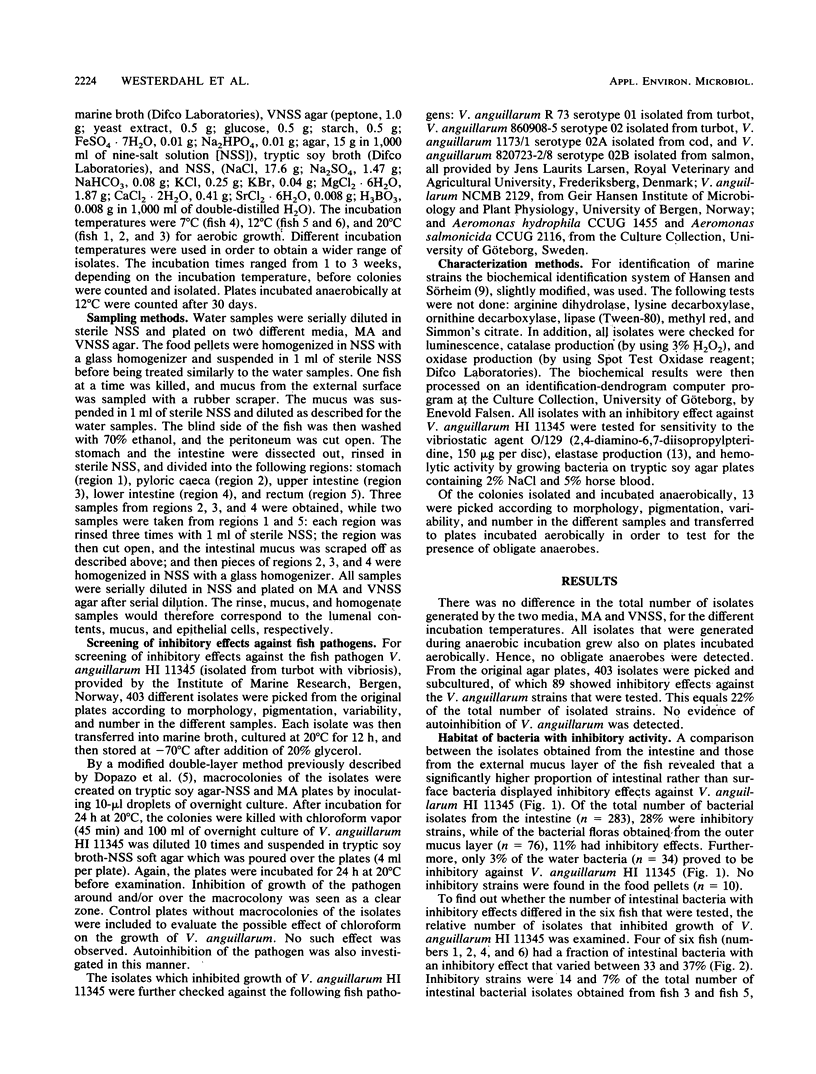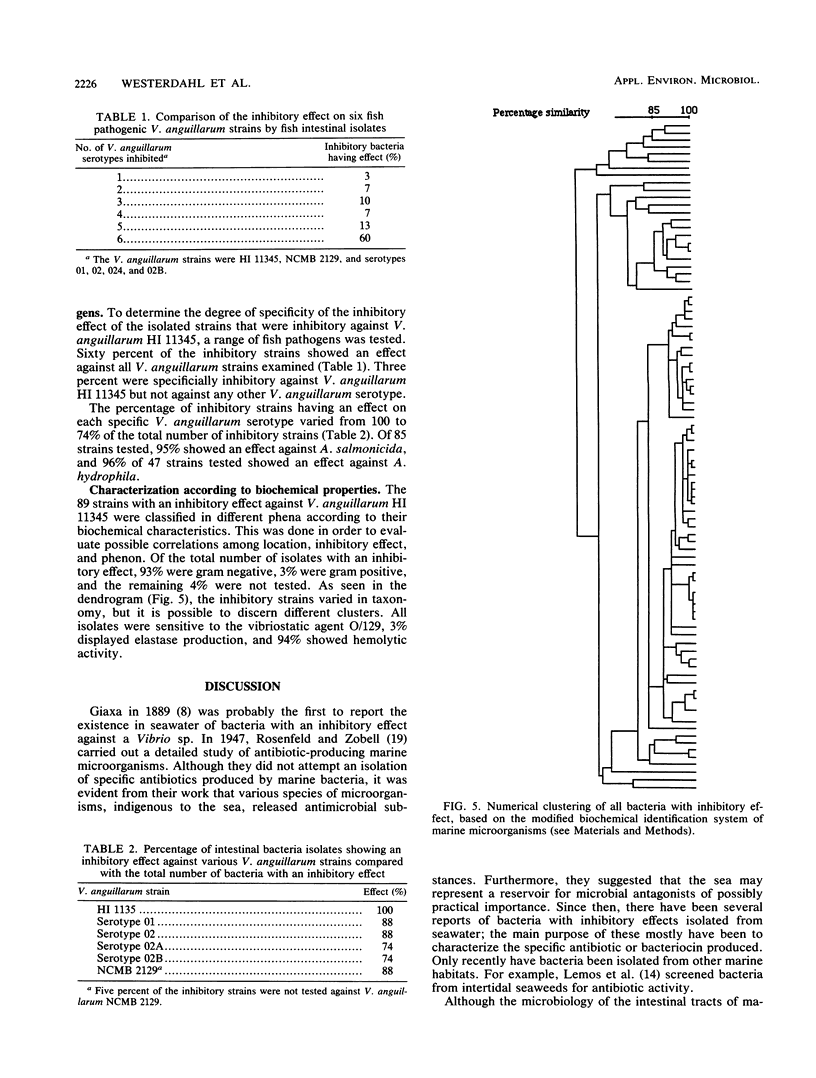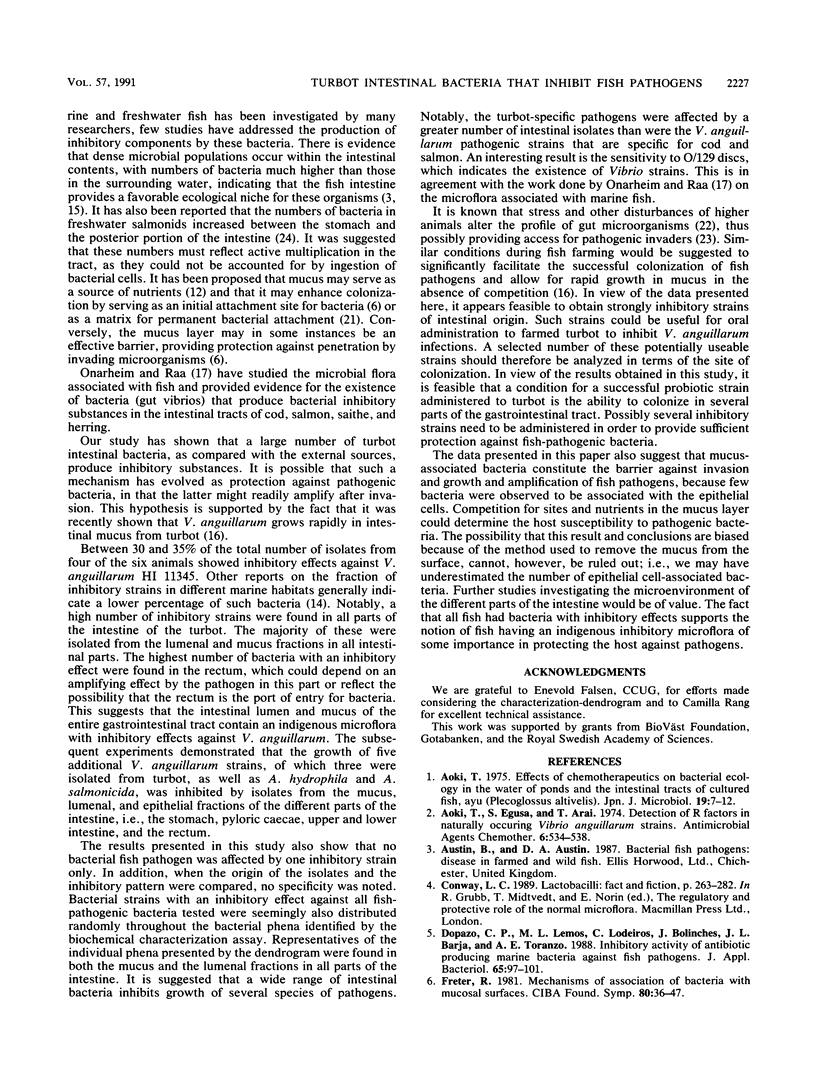Abstract
More than 400 isolates from the intestine and the external surface of farmed Scophtalmus maximus as well as from fish food and hatchery water were screened for inhibitory effects against the fish pathogen Vibrio anguillarum HI 11345 and seven other fish pathogens. The bacteria with inhibitory effects were then characterized with regard to their sites of colonization, especially the intestinal regions and sites within each region. Of the total number of bacterial isolates from the intestine, 28% were inhibitory against V. anguillarum HI 11345. A marine biochemical assay was used to order the inhibitory strains into different phena. Most inhibitory bacteria were found in the rinse and mucus fractions of the gastrointestinal tract. No correlations among the different phena, site of colonization, and inhibitory effect could be found; however, a biochemical diversity was noted in the strains with an inhibitory effect. Of the isolates with an inhibitory effect against V. anguillarum HI 11345, 60% had an inhibitory effect on five other fish-pathogenic serotypes of V. anguillarum. Inhibitory effects of the isolates were also shown against Aeromonas salmonicida and Aeromonas hydrophila.
Full text
PDF





Selected References
These references are in PubMed. This may not be the complete list of references from this article.
- Aoki T. Effects of chemotherapeutics on bacterial ecology in the water of ponds and the intestinal tracts of cultured fish, ayu (Plecoglossus altivelis). Jpn J Microbiol. 1975 Feb;19(1):7–12. doi: 10.1111/j.1348-0421.1975.tb00841.x. [DOI] [PubMed] [Google Scholar]
- Aoki T., Egusa S., Arai T. Detection of R factors in naturally occurring Vibrio anguillarum strains. Antimicrob Agents Chemother. 1974 Nov;6(5):534–538. doi: 10.1128/aac.6.5.534. [DOI] [PMC free article] [PubMed] [Google Scholar]
- Dopazo C. P., Lemos M. L., Lodeiros C., Bolinches J., Barja J. L., Toranzo A. E. Inhibitory activity of antibiotic-producing marine bacteria against fish pathogens. J Appl Bacteriol. 1988 Aug;65(2):97–101. doi: 10.1111/j.1365-2672.1988.tb01497.x. [DOI] [PubMed] [Google Scholar]
- Freter R. Mechanisms of association of bacteria with mucosal surfaces. Ciba Found Symp. 1981;80:36–55. doi: 10.1002/9780470720639.ch4. [DOI] [PubMed] [Google Scholar]
- LISTON J. The occurrence and distribution of bacterial types on flatfish. J Gen Microbiol. 1957 Feb;16(1):205–216. doi: 10.1099/00221287-16-1-205. [DOI] [PubMed] [Google Scholar]
- Rosenfeld W. D., Zobell C. E. Antibiotic Production by Marine Microorganisms. J Bacteriol. 1947 Sep;54(3):393–398. doi: 10.1128/jb.54.3.393-398.1947. [DOI] [PMC free article] [PubMed] [Google Scholar]
- Trust T. J., Sparrow R. A. The bacterial flora in the alimentary tract of freshwater salmonid fishes. Can J Microbiol. 1974 Sep;20(9):1219–1228. doi: 10.1139/m74-188. [DOI] [PubMed] [Google Scholar]


